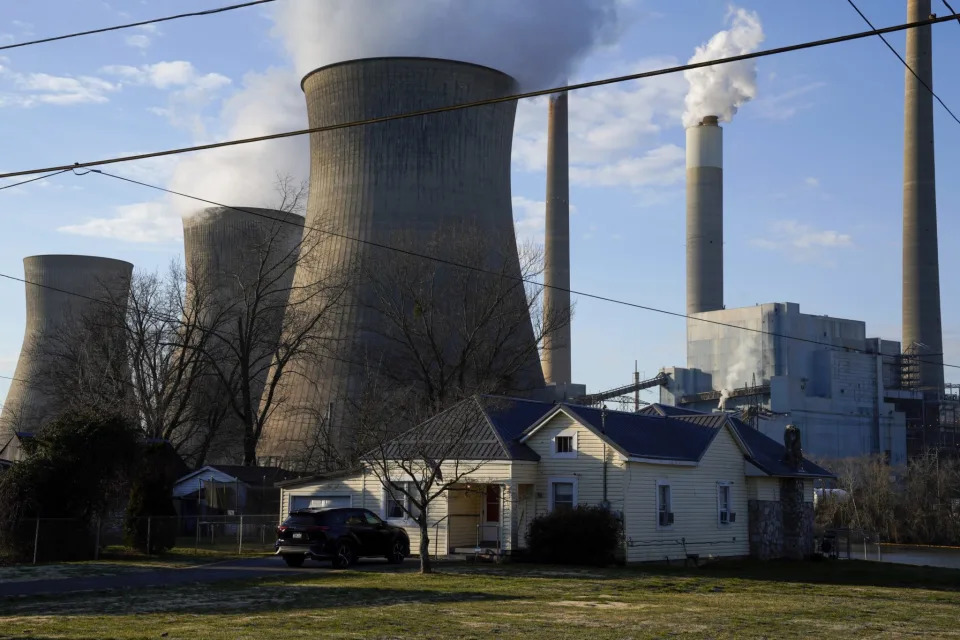Jonathan Randles
Tue, August 15, 2023

(Bloomberg) -- An affiliate of Ken Griffin’s Citadel has acquired roughly $485 million in Yellow Corp. debt previously owned by Apollo Global Management Inc. and other senior lenders to the bankrupt trucking firm, according to a person familiar with the matter.
The deal comes as Yellow seeks to secure a bankruptcy loan to fund its liquidation. Apollo and other senior lenders had offered to provide the company $142.5 million in new money to fund the trucking firm’s wind-down, but Yellow was approached with less expensive options after filing Chapter 11.
Apollo and other existing Yellow lenders won’t proceed with their proposed Chapter 11 loan as a result of the Citadel deal, the person said. A Yellow lawyer said last week it is considering alternative bankruptcy loans from hedge fund MFN Partners LP, the company’s largest shareholder, and rival trucking company Estes Express Lines.
A Citadel spokesman declined to comment. Lawyers representing Citadel Credit Master Fund LLC filed court papers Tuesday in Yellow’s bankruptcy. A representative for Apollo declined to comment.
The Financial Times first reported that Citadel acquired Yellow debt owned by Apollo and other lenders.
Yellow has said the alternative bankruptcy loans its considering are less expensive and will give the company more time to sell its valuable real estate portfolio and vast fleet of trucks and trailers. The Chapter 11 loan offered by funds managed by Apollo and other existing lenders carried 17% interest and higher fees.
The case is Yellow Corp. 23-11069, US Bankruptcy Court District of Delaware (Wilmington).
Todd Maiden
Tue, August 15, 2023

The provider of Yellow's bankruptcy financing could be announced on Thursday. (Photo: Jim Allen/FreightWaves)
Apollo Global Management has sold the term loan it held for Yellow Corp. and has withdrawn its proposal for bankruptcy financing, according to Financial Times.
Miami-based hedge fund Citadel has acquired Yellow’s $485 million debt from Apollo and other lenders. A Tuesday Delaware bankruptcy court filing showed counsel representing Citadel Credit Master Fund would depose representatives from Yellow on Wednesday regarding post-petition financing.
Apollo’s (NYSE: APO) debtor-in-possession (DIP) financing package was touted in bankruptcy filings as the only viable offer made to the less-than-truckload carrier in the days leading up to its Chapter 11 petition. The $142.5 million deal was expected to provide the company with the funds necessary to market and sell off its terminals and equipment.
The deal would have also provided the private equity firm with an improved lien position among secured creditors. It held first-lien position on the term loan as well as a better lien position than the U.S. Treasury, which is due $737 million from a 2020 COVID relief loan to the carrier.
However, representation for Yellow said last week that better offers came forward following the bankruptcy petition and that Apollo’s terms were too onerous. That deal carried a 17% interest rate, a $32 million closing fee and a 90-day window to liquidate the assets.
The frontrunners at the time included LTL carrier Estes Express Lines and Boston hedge fund MFN Partners, which acquired a 40% stake in Yellow’s stock in July. However, Yellow attorney Pat Nash said at a Friday hearing there had been “a number of inbounds from other parties” willing to provide new money in a junior position to existing creditors.
A Tuesday hearing, which could have potentially revealed the new DIP lender, was pushed backed to Thursday.
In recent days, company insiders have been selling restricted and other shares of Yellow ahead of the stock’s delisting on Wednesday.














